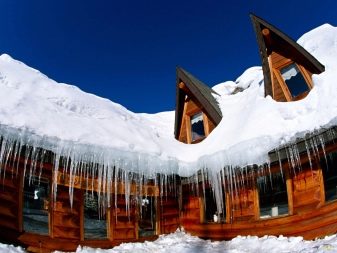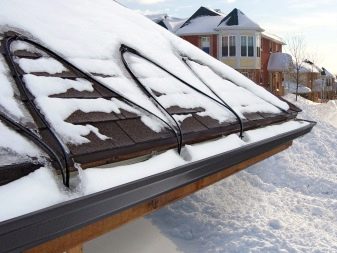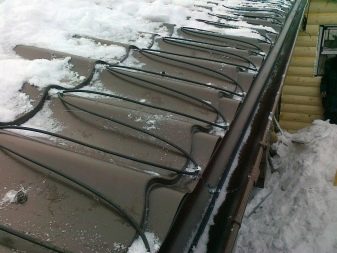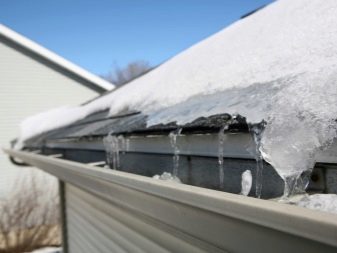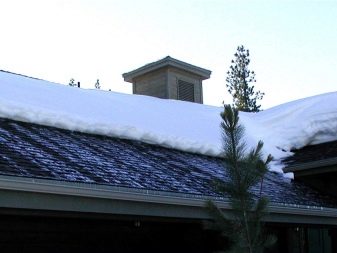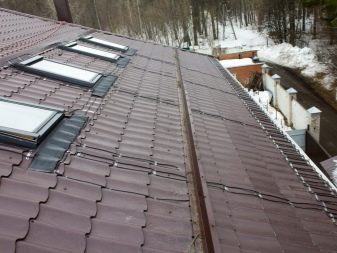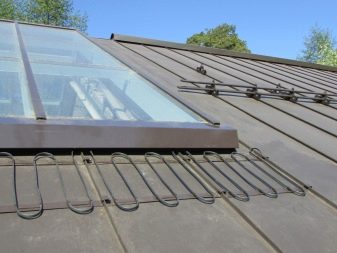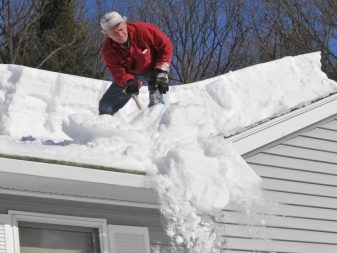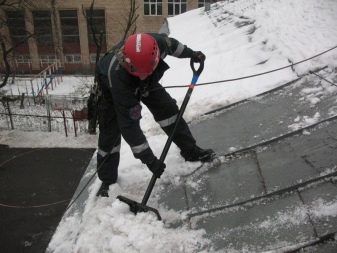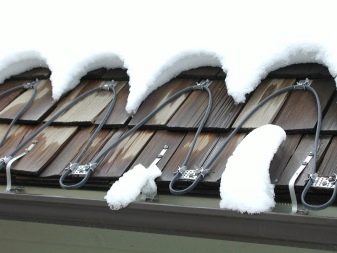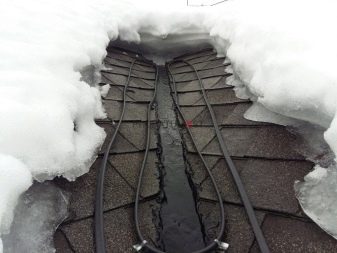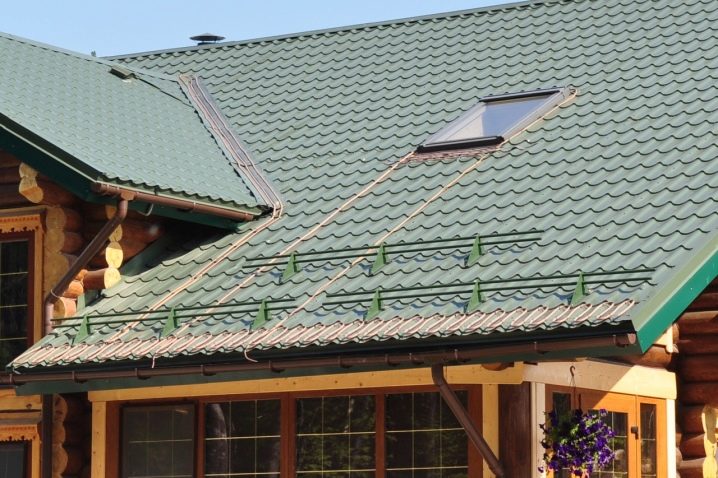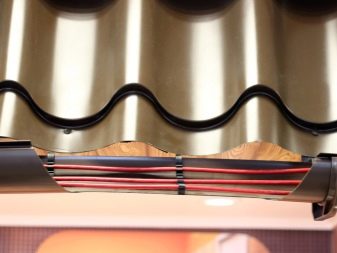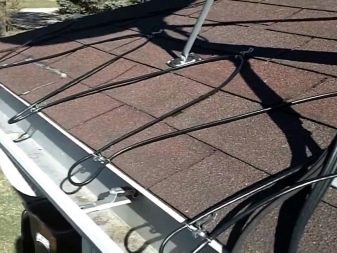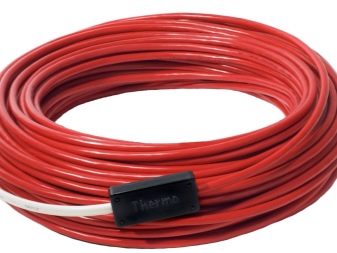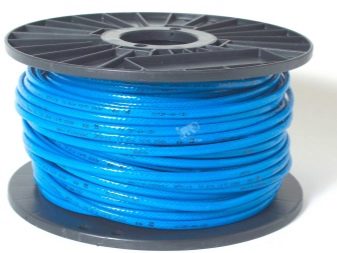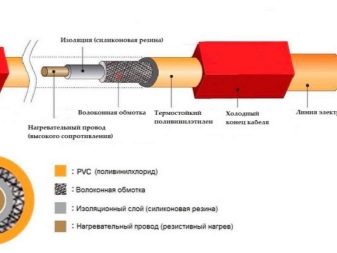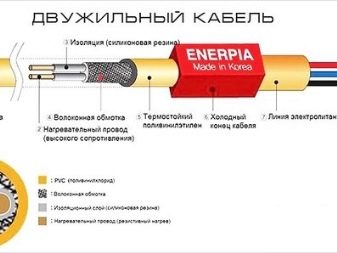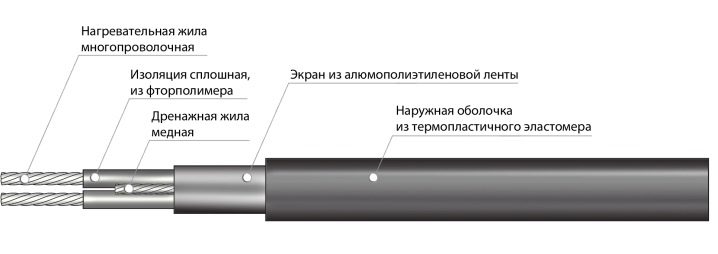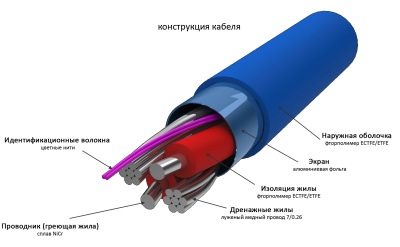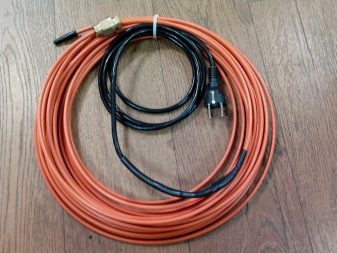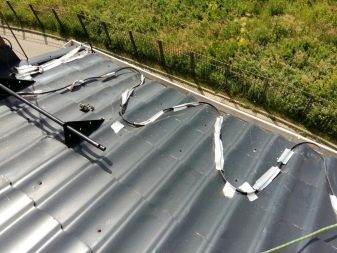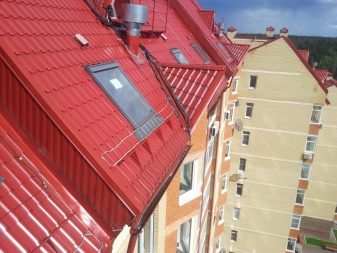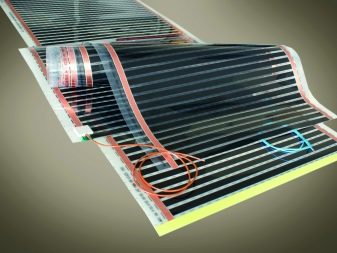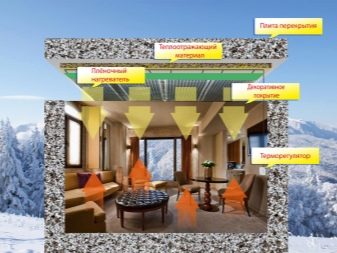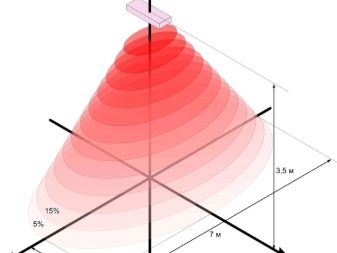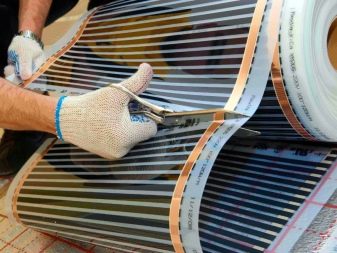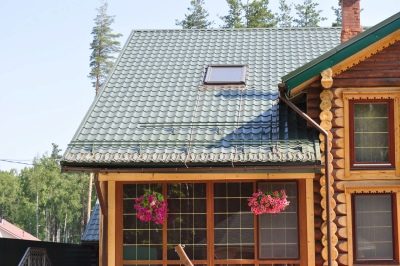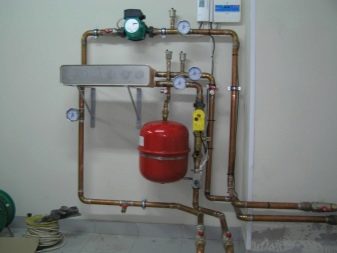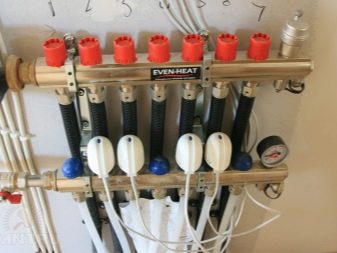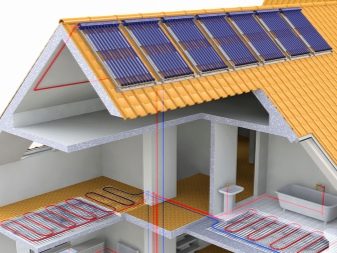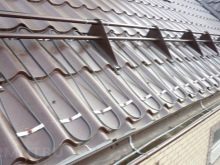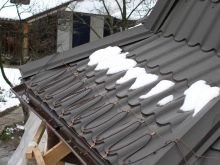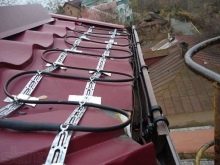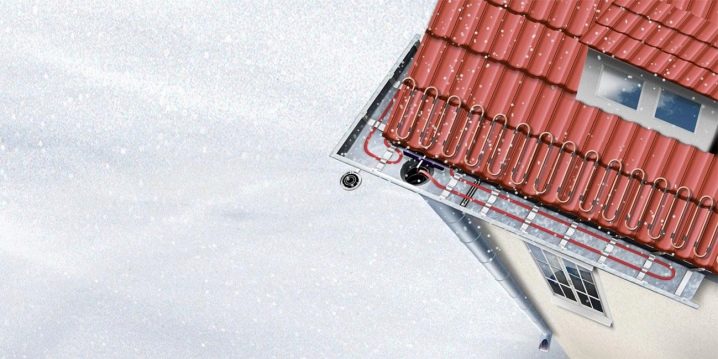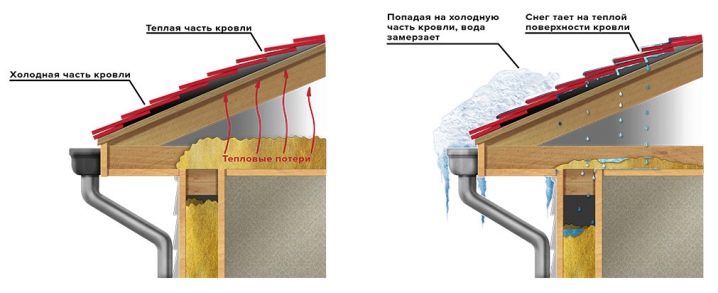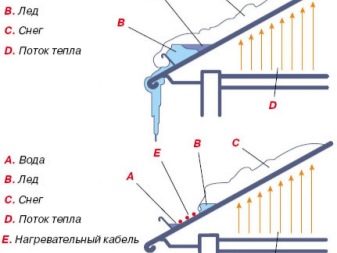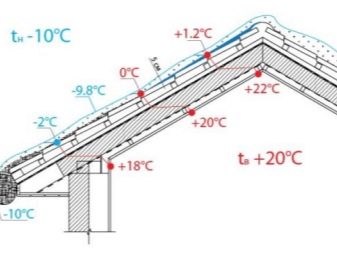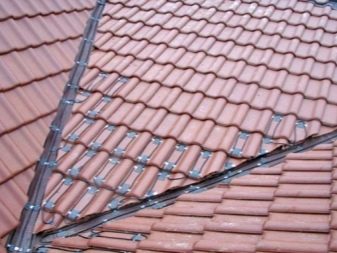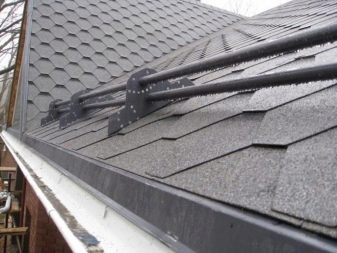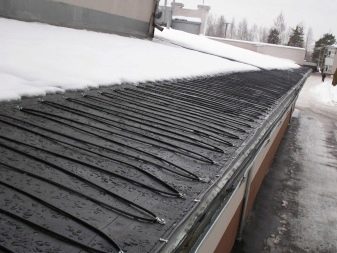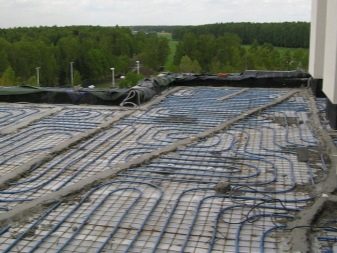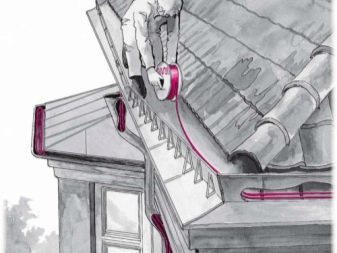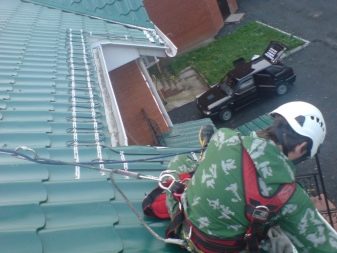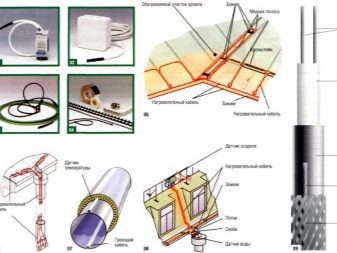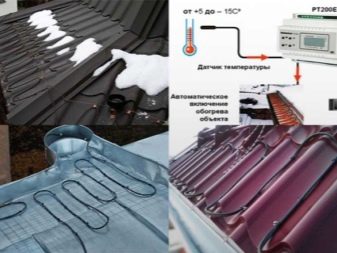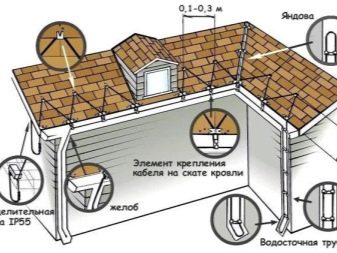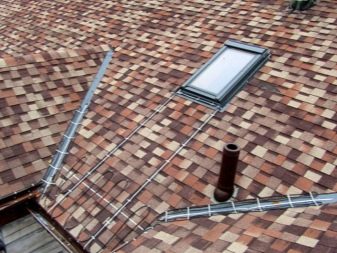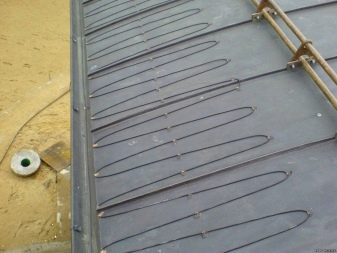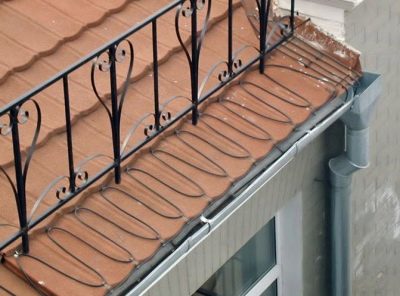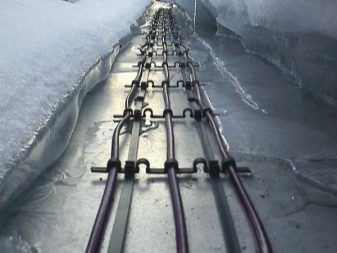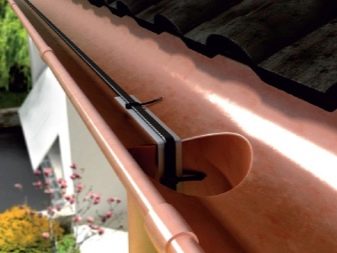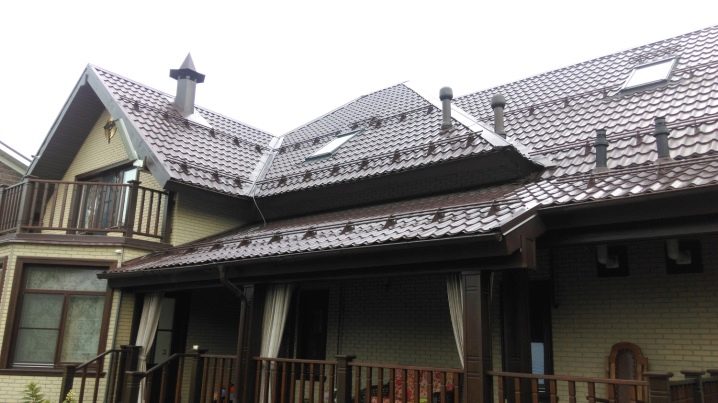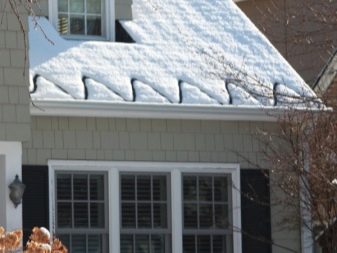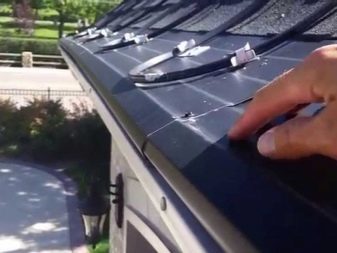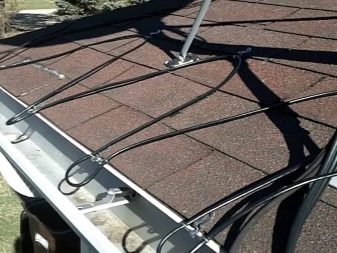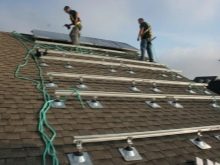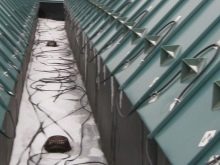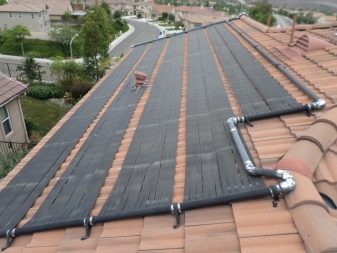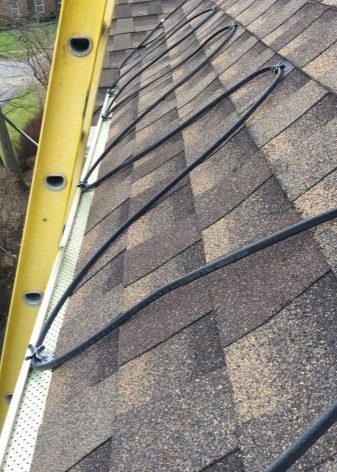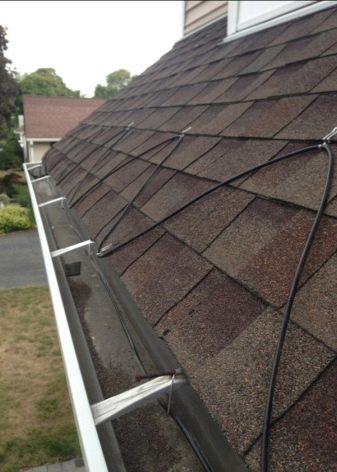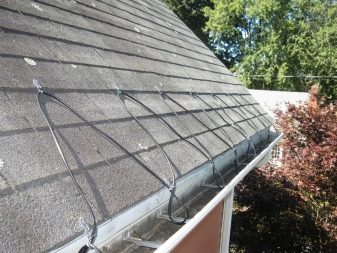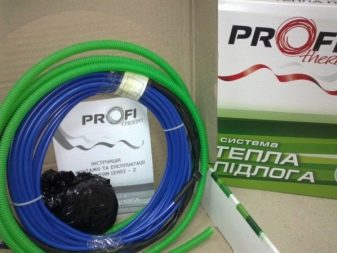Heated roof: how to prevent roof icing?

In the transitional time of year from the cold to the warm season, the question of how to prevent roof icing is a pressing one before house owners. Until now, manual cleaning was considered the prevailing method. But this method is already outdated. Such work is laborious and dangerous, and the result is short-lived. There is a more modern, safe and efficient way - heating the roof.
Features and benefits
Snow and frost on the roof, icicles on the eaves, ice in the pipes of drains - all this causes many problems. Significantly increases the load on the rafter system, pedestrians suffer, damaged architectural elements of the roof.Corrugated rust; the material of which the gaskets are made under the fasteners is destroyed. When the ice begins to melt naturally, the roof leaks.
There are several reasons for icing:
- Incorrect roofing material. Metals, slate and tile are more prone to the formation of ice masses than soft roofing materials or sheets with a polymer coating. On the relief roof more snow lingers than on smooth, especially when the slope is less than 10-15 degrees. Properly chosen material and a large slope only partly solve this problem, and the method is applicable only for private houses, but not for typical urban buildings.
- Features of the climate. The weather in many regions of our country is changeable. Frost on the roof can form not only in the spring, but also in the transitional period from autumn to winter and even in warm winter.
- Drainage system violated. Problems with the icing of the roof would be less if all the moisture went down the drain. An improperly designed disposal system, blockages or damage interfere with this process. Most of the water lingers on the eaves and freezes, and together with it freezes through the drain.
- Poor roof insulation. Warming of the roof from the inside is necessary not only to maintain a comfortable level of heat in the room, but also so that the surface of the roof does not heat up.
The big difference between the temperature of its surface and the ambient temperature is the main reason for the formation of ice. The snow begins to melt, freezes, and ice masses are formed.
The solution is to regulate the temperature of the roof surface. It should be the same with the ambient temperature. None of the widely used methods for dealing with icicles and ice on the roof works in this way.
Management companies continue to drive employees of the home service with shovels and insurance on the roofs of high-rise buildings. Owners of private houses climb the roofs on their own. Both those, and others risk the health and use tools which spoil a roof. Under mechanical action with a shovel, the surface of the roofing material wears out. In damaged areas leaks form over time.
There is an alternative way: a chemical composition is applied to the ice crust and icicles, which “eats” ice.And a variant that is not typical for Russia is the use of hot steam. Running on a slippery roof with boiling water in a kettle is doubly dangerous and simply absurd, and professional equipment is prohibitively expensive. The only effective way to prevent icing of homes is to heat the roof and gutters.
Advantages of heating:
- The system is autonomous and equipped with protective mechanisms. It is connected to a separate RCD and in the event of any unforeseen situation it is automatically disconnected.
- The presence of several types of anti-icing systems. They are electric, water and infrared.
- Simply adjust and adjust manually if necessary.
- High performance in the fight against icing. Both the roof, the eaves, and the drain are heated, which prevents icicles and ice.
- All elements of the system are amenable to repair, you can replace them partially in case of breakage.
- Increases the service life of the roofing material. Virtually all materials for roof plating suffer from temperature differences. They become more fragile, lose their color more quickly, the mounting system deteriorates, which leads to leakage. Heating solves all these problems.
- The installation of the system does not affect the aesthetic appearance of the building. It is not visible from the ground.
The advantages of the system level the disadvantages, but, nevertheless, they are:
- complex installation requires professional participation;
- high cost of the system and components;
- energy costs and other methods of heating - the larger the roof area, the more expensive the operation of the system will cost.
Modern technologies
Anti-icing systems are of two types: electric and water. Electrical, in turn, are divided into cable and infrared.
Cable
The system based on the heating cable is still the most common. Its equipment is quite simple:
- distribution network;
- control unit and heating elements;
- fasteners.
The control unit is the "heart" of the system. It controls all sensors, thermostats and emergency shutdown system. Sensors determine precipitation and temperature of the roof and air. If necessary, they automatically start the operation of the heating cable.
The distribution network provides communication between all elements of the system and provides power to the cables.This is a kind of conductor from the energy source to the heating elements. The heating (heating) cable is the external part of the system, which is fixed on the roof, cornice, drain. The elements inside the cable convert electrical energy into heat, melting snow and ice.
The heating cable is available in two versions: resistive and self-regulating. Resistive cable is simpler and cheaper. He has a fixed running power (that is, his ability to give off heat per 1 square meter of surface area). For heating the roof need a cable with a capacity of 20W / m when connected to 220-230V. The number that shows the total power over the entire area should be divisible by 3, the maximum permissible deviation is 15%.
The cable warms up evenly on all parts of the roof; this feature cannot be adjusted.
Types of resistive cable:
- Single core Its functionality is limited, so the price is the lowest. Inside it is only one metal conductor through which an electric current passes. It must be connected from two ends. This means that after laying the cable on the roof, its other end must be brought back to the control unit and the ends must be brought together at one point.The cable must be solid, it can not be cut into separate pieces. When installing an extensive system, each cable must be returned to the starting point for the system to work.
- Strong. As is clear from the name, the conductor lived in it is not one, but two. The advantage of this cable is that it can only be connected at one end. The second end, which remains on the roof, is closed by a hermetic coupling. This greatly simplifies installation, although it costs more.
The heating wires of the resistive cable are protected by an insulating layer, on top of it there is a copper braid covered with an outer sheath. This multilayer protects the cable from overheating and freezing, moisture, mechanical damage. For hard roofing materials (decking, slate, tile), you can use the cable in any sheath. For materials containing bitumen (roofing felt, ondulin, onduvilla, soft tile) - only cable with fluoropolymer sheath.
Self-regulating heating cable has an advantage over resistive. It is highly sensitive to temperature fluctuations, it can regulate the level of heat given off.In the shade it will heat up more than in the sun, in the heat - less than in the cold. This provides high-quality anti-icing and economical electrical heating, because energy is not wasted. Inside the self-regulating cable there are copper conductors, a matrix regulating heat transfer, a protective sheath and a braid, and on top is a universal sheath.
The cable can be cut anywhere. Due to this feature does not have to overpay for the surplus by the meter.
Advantages of cable heating:
- Cable flexibility It is convenient to mount it with a small step and can be used on the roof of any complexity.
- The device is protected from damage. He is not afraid of temperature drops, overheating, liquid from melting snow.
- Heating works as needed, and not in the non-stop mode, which saves energy costs.
- Warranty and long life.
Cons of the heating cable:
- The most efficient view is expensive and it pays off slowly.
- Cabling is a laborious process.
- Increased energy costs.
- In the event of a power outage will not work.
- Can not be used on a large area.
- Do not let dry leaves and inflammable debris fall on the cable. It does not heat up to such a temperature that they can flare up, but as a preventive measure, it is better to get rid of them.
Infrared
For the Russian market, infrared thermal equipment remains a novelty. It is still difficult to evaluate it because it is used infrequently, especially as an anti-icing system for the roof. And this is a big omission, because IR systems are in many ways superior to cable and water heating. Their main difference is in the method of heat exposure. Electric energy is transformed by elements into infrared radiation, which is similar in its properties to sunlight.
The system consists of a base, heating elements, electrical conductors and a protective film. The basis is made of high-strength polypropylene and lavsan substrate. The first layer is stabilizing and protective, so infrared heaters for the roof are not afraid of moisture and cold, and the second serves as a shielding surface so that the heat does not go down. Heating elements are made of carbon fiber. It gives 98% of heat.
The conductive core is replaced by thin copper-silver plates. Between the elements glued together with an adhesive resistant to high temperatures. The upper "shell" protects the system from exposure to the external environment, and the roof - from overheating.
Advantages of IR systems:
- The highest efficiency and uniform return of heat.
- Simple and cheaper installation than cable systems.
- You can adjust the temperature in a few seconds with an accuracy of a degree.
- Economical service. The thickness of the elements is not more than 5 millimeters, so no electricity is required to heat the extra layers in the structure.
- Carbon plates inside the film work as autonomous systems. That is, if one site is damaged, it will not affect the rest. If a resistive cable breaks down, it will have to be replaced entirely.
- The most reliable protection against moisture has been developed for heating the roof; this ensures its long-term use.
- Infrared heating can be installed where it is forbidden to pull the wiring.
- You can protect individual elements with an infrared film, for example, water pipes. It is convenient to cut the IR film into fragments; for this purpose, cut lines are applied to it.
Disadvantages:
- For all its economy, it still works on electricity. Along with the tariff grow costs.
- The system is affected by power outages.
- Both film and rod infrared heating is a narrow and long polypropylene rectangle, which is inconvenient to mount over the roof, it must be installed directly under the roofing material, which in some cases is more difficult than laying on the surface.
- It is difficult to mount on the roof of an intricate architectural form.
- It will not work to heat the drain pipe.
Water
By the principle of action, it resembles cable de-icing systems: on (or under) the surface of the roof, pipes are installed through which hot water flows. It is presented in two forms: a system that operates from an electric or gas boiler, and a combined electric heating.
In the first case, water is supplied to the pipes from a separate boiler, in which it is heated to the desired temperature, and in the second, the pipe is already filled with liquid and a resistive cable is installed inside. The boiler is not necessary, the pipes are connected to the control system almost like a cable.
Advantages of water heating:
- the system on gas is ten times cheaper to maintain than the electric one;
- does not depend on interruptions in electricity;
- it is automated and secure;
- service life longer than other systems
The disadvantages of water heating is still more:
- complex system installation;
- the pipes are thicker and less flexible than the cable, so it’s not possible to roll them up in small steps;
- hot water cools as it moves through pipes across the entire perimeter of the roof; by the end of the cycle, its temperature may not be enough to melt ice;
- in case of breakage is not subject to recovery;
- pipe freezing should not be allowed; they may crack;
- it is more difficult to regulate the level of heat than when using electric heating;
- the system is in standby mode - you need to start it before icing occurs, otherwise the efficiency decreases.
Options for different designs
The architecture of modern homes can be very intricate. There are not only buildings with unusual facades and layout, but also irregularly shaped roofs. Among the possible options - flat, single-slope, gable, gable, multi-tong, hip, hip, mansard, dome, spherical, curly. There are even concave roofs.
The more complex the shape of the roof, the more snow masses stay on it and more ice and icicles form when the snow melts, and the more difficult it is to clean it manually.
Another classification plays a role: cold, warm and hot roofs.
- "Cold" Roofs are surfaces with minimal heat radiation. It is observed in houses where there are no warm rooms (storage rooms, living rooms, recreation areas) under the roofing space. Snow melts only with a natural increase in ambient temperature. Cold roofs are usually those under which there is little free space. These are asymmetrical duo-pitch, different types of scippy, complex curved roofs. For them, the minimum power of the heating system is sufficient. Cable heating will be suitable using single-core resistive cable up to 20 Kv / m. Also a good solution can be a water system, since its efficiency decreases during the cycle and does not give maximum efficiency.
- "Warm" Roofs are surfaces on which snow begins to melt at a low sub-zero temperature due to heat losses. This happens for several reasons: the slope of the slope is too small,insulation is poorly mounted, there is a technical room under the roof, the house is very old, the gaps in the insulation were formed naturally. “Warm” is the roof of any shape, but mostly it is spherical, hip and gable roofs, under which heat accumulates. The most effective in the fight against snow and ice will be cable and infrared heating. With a small roof area enough water circuit.
- "Hot" Roofs are surfaces with the highest heat loss possible. The roof can heat up due to the inept installation of the insulation system, the presence of living space and the heating system in the attic, the emergency condition of the roof. Or it has a slope slope no more than 5 degrees.
As living quarters, attic under high gable roofs and roofs of mansard type are usually used. The minimum slope is found only at flat roofs. Snow melts on them very actively, even if it is -10 and below on the street. Water circuit for mansard roofs is inefficient. As an anti-icing system, it is better to use a self-regulating cable with a power above 20 Kv / m.An alternative option is to finish the roof from inside with an infrared roll film. This will also help to keep the heat inside the living room in the attic.
Heating the flat roof is the most difficult. In addition to the fact that snow from a flat surface does not roll down anywhere and is actively melting, there is no place to merge and the resulting liquid. With a minimum slope, it simply remains a puddle on the surface of the roof, so it is necessary to arrange drain funnels. Funnels also need heating. The drainage system can be of two types: traditional with the use of drain holes and gravitational-vacuum.
In the first case, the water goes to the drain holes on its own, it happens slowly and requires at least some slope of the roof. In the second, the liquid is literally absorbed into the drain system due to the presence of siphons.
For a flat roof, infrared heating and a combined system are suitable. The sections of pipes of the drainage system are wrapped with film so that they do not freeze, and the cable is mounted on the surface of the roof in several places. Or pipes and roofs from the bottom side are equipped with an infrared film. The power system needs the maximum.
Subtleties of installation
Installation of anti-icing systems requires training, special skills and strict adherence to safety regulations. This may be more difficult than expected, so it is better to entrust the work to professionals. If minimal electrical skills are already available, you can connect the system yourself. Installation is carried out in three stages: design activity, preparation and installation itself.
Calculations and design
Development of the project - the first thing you need to take when installing a heating system for the roof and adjacent elements. Since the installation of electrical equipment on the roof is a potentially unsafe improvement in the living space, it must be fixed on paper. In the absence of project documentation, the change will not be considered legal and will become an obstacle when trying to sell a house.
The project is developed step by step:
- Measurement of the perimeter of the roof, the definition of the slope of the slope and the type of roof. These data will be needed to determine the required capacity and quantity of materials.
- Identification of difficult places in which the snow is likely to linger.
- Calculation of the power of the heating system, the calculation of the type of cable and its total length.
- The choice of components.
- Drawing layouts of heating sections on the roof drawing.
The finished project should contain information on how the heating elements are located on the roof, what is the total capacity of the system, where the RCD is located, whether the requirements of electrical installation rules and fire prevention measures are observed.
The roof area is measured on the basis of its shape. Each side of the ramp (if any) is measured separately, and at the end is summed up in a total number.
Cable laying principles:
On the bottom
It is important to consider the slope of the slope and the type of roof. On a cold roof with a slope of no more than 15 degrees, heating the drain and eaves system is sufficient. With increasing slope increases and the area that needs to be heated. On the edge of the cornice, the cable is laid up to 40 cm in height with a snake. The pitch with which the cable is rolled, for single-core cables, 10-15 cm, for strong cables, about 30. The distance between zigzags recommended by the manufacturer cannot be exceeded.
If the roof is warm and flat, the cable is laid along the edge to a height of 30 cm, as well as along the drain pipes.If the slope of the roof increases, the risk of getting out of the ice increases, so the heated area also increases. The maximum permissible heating zone in width for a flat roof reaches 50 cm.
The flat roof is heated along the edge, they heat the water drainage system. If necessary, run the cable in the center. The width of the heated surface is 30-40 cm. Around the drain funnels, the cable is laid so that it is no shorter than 50 cm to either side of the hole. The end is looped inside the drain hole to the level where the air temperature is already above zero.
For a roof with a slope of more than 45 degrees do not need heating on the rail. It is so steep that the snow melts before it freezes. At such a roof, only elements of the drain are equipped with heating elements.
In places of snow accumulation. In problematic places, the cable is mounted in small steps so that the entire surface warms up and there is no ice left. Complicated areas include places where parts of the roof slope meet: endovy and drainage edges, points of contiguity of the slope to a vertical surface. The height of the valley is enough to lay a cable snake for 2/3 of the length.It is important to bear in mind that in the places of junction with the wall from it you need to retreat at least 5 cm.
By drainage system
It so happens that in the construction of the roof there are no elements of water discharge as such. If there is no drain, the cable must be fixed along the very edge of the roof by a method called “dripping loop” (for a slope of 15-20 degrees) and a “dripping edge” (less than 15 degrees, flat roofs). The hinges are mounted with an allowance of 50-80 mm with the expectation that the melt water will flow to the ground along them.
If there is a groove, then the cable is laid above it, along the edge of the roof, and in it. Inside the gutter, it should lie two or three parallel lines, without zigzags. The end of the cable must loop in the drain. You also need to fix inside the drain pipe heating coil.
One of the most difficult tasks when creating a project is to calculate the length and total power of the cable for ice thawing.
The length consists of all the elements that need to be heated. Different roof areas may be different. For example, To calculate the heating of the gutter and pipe, you will need to perform several actions:
- Measure the length of the gutter and drain.
- The cable inside the gutter is laid in 2 or 3 rows (depending on the width). Accordingly, you need to multiply the length by 3. This is L1.
- Inside the pipe, the heating thread is laid in a spiral, so you need to multiply its length by 1.5 or 2, so that it is enough for the turns. This is L2.
- The average power required for heating the roof is 20 KV / m. The total power is calculated by the formula: total cable length * power / square meter. We get: (L1 + L2) x 20 Kv / m.
The last component to choose: fasteners and suitable control unit. Then determine the location of the block. It should be protected from moisture and sun, but located in an accessible location for repairing a manual restart if necessary.
Metal and plastic clips, glue, sealant are used for fastening. Metal hardware is better not to use.
Preparatory work
At a preparation stage two important tasks are solved:
- Check the elements of the heating system for faults and defects. The cable must be smooth, the same thickness at any point, without damage to the shell, creases and dents. The complete set consists of 3 types of cable (connecting, feeding, heating), control boxes, temperature sensors,thermostat and other regulatory elements, couplings, mounting clips.
- Check the work surface. The basis for laying the cable is cleared of debris, dust, dried from water. You also need to check that in the areas of the roof where the cable will be laid, there are no sharp corners and parts potentially dangerous for the integrity of the cable.
Installation
Both professional installation, and installation by the hands are carried out equally step by step:
- Inspection of cable laying place on the roof.
- Pre-cable installation without attachment to clips, clamps or glue. You can use masking tape. The basis for laying is a wiring diagram included in the project.
- If the cable sections coincide in length with the heated areas, the excess length can be cut off (with a twin conductor and self-regulating cable) and closed with couplings.
- Fastening the heating elements on the roof.
Check
At this stage, you need to install the installation boxes, “ring out” the heating cables to check the integrity of the wires, measure the resistance.
- If the phrase “ring the cable” raises questions - this is a sure sign that you should not take on installation yourself.
- If the test is successful, you can mount the thermostat sensors and other cables.
- Installation of control panel.
- Check the remaining cables in the same way.
- Check the operation of the security system (emergency shutdown).
- The final setting of the thermostat, commissioning.
Professional Tips
For the system to work for a long time and correctly, it is important to observe some subtleties during the installation process:
- Lay cable in warm weather.
- Combination of cable types helps to increase efficiency and reduce energy consumption. Expensive self-regulating set in the drain, and resistive - on the eaves.
- Inside the drain pipe cable lay coils. Down the distance between the coils is reduced, because the pipe is colder near the ground.
- Layering of heating elements on each other is prohibited.
- Take into account the manufacturer's recommendations when setting the lower threshold of temperature for switching on the system independently.
Tips for extended life:
- annually it is necessary to conduct a routine inspection of the elements of the system and to check the resistance
- clean the roof and gutter from dust and debris;
- check the operation of sensors and thermostat before the onset of cold weather;
- adjust the system so that the heating is turned on before the formation of an ice crust;
- check the operation of the RCD and the emergency system.
Manufacturers Overview
Independent selection of heating systems can be a daunting task. It is difficult to figure out whether resistive or self-heating cable is needed, a thermal or infrared system, and whether anti-icing and anti-icing cables differ in heating the roof. Errors are not critical, but lead to difficulties during installation and increase the cost of maintaining the system for the season. It makes sense to purchase ready-made kits.
In the domestic market, there are still a few manufacturers of anti-icing equipment for the roof. But several brands have already gained confidence. Among them:
- German manufacturer of electrical equipment Hemsted;
- French concern Nexans, specializing in cable products;
- Thermopads originally from the UK;
- Polish company Profi Term;
- American manufacturer Thermo.
Among domestic manufacturers speak positively about the products of the company "Thermal Systems", "Term" and "SST".
On how to heat the roof, see the following video:
